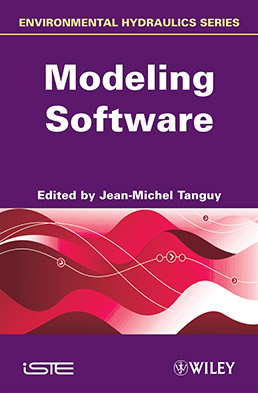
The study and management of water resources – especially the quantitative approach taken through the science of hydraulics and hydrology – is becoming increasingly important as those resources are affected by increasing population and development, the demands and consumption of industry, pollution, and climate change. Since the existence of water in the environment is also related to the role it plays in many other processes – from weather phenomena and climate, including heat transport in the atmosphere and oceans, to shaping the physical geography and geology of the landscape of rivers, plains, and coastal regions through erosion and deposition – this is a complex and interrelated field relating ecosystems, geography, climate, and planning and development among other topics.
This series of five volumes focused on environmental hydraulics studies the complete water (or hydrologic) cycle from meteorology to coastal morpho-dynamics, including looking at river hydraulics, hydrogeology and marine hydraulics. It describes these physical processes, and how they are observed in the real world, from catchment basins or watersheds where precipitation first falls, all the way through the transport of water to the sea. An inventory of ground measurement instruments, which provide necessary input data for the various modeling tools described in the book, is drawn up, and mathematical models describing each field within the overall subject area are detailed by a series of system equations. These are then solved by the use of numerical methods adapted to the particular characteristics of the application in question.
Many of the key modeling tools used by engineers in practice in the field are described in detail, as well as numerous examples of the application of the methods to real world problems, presented as case studies that highlight all of the processes described above.
The final volume in the series, Volume 5 surveys and describes the operational features of the modeling software available and used in each major area of the discipline.
Part 1. 3D Models
1. Non-Linear Waves With REFLUX 3D, Philippe Sergent.
2. Current Modeling with TELEMAC3D, Jacques Chorda and Marie-Madeleine Maubourguet.
3. Atmospheric Modeling, Jean Pailleux.
4. Groundwater Flow Modeling in Porous Media Using MARTHE, Dominique Thiéry.
Part 2. 2D Models
5. Meteorology and Hydrology, Florence Habets.
6. Hydrological Modeling with MARINE, Marie-Madeleine Maubourguet.
7. Distributed Hydrological Modeling – the ATHYS Platform, Christophe Bouvier, Anne Crespy, Agnès L’Aour-Dufour, François Noël Cres, François Desclaux and Arthur Marchandise.
8. Operational Applications of the LARSIM Model for Flood Forecasting, Norbert Demuth.
9. Real-Time Runoff – Infiltration Models: TOPMODEL, Georges-Marie Saulnier.
10. Currents with TELEMAC2D, Marie-Madeleine Maubourguet and Jacques Chorda.
11. 2D Model of Sediment Transport with RUBAR 20TS, André Paquier.
12. NAVMER: Ship Trajectory Simulator, Yann Hollocou.
Part 3. 1D Models
13. Waves Using VAG, Philippe Sergent.
14. Real Time Discharge-Discharge Models with SOPHIE, Marie-Pierre Nérard.
15. 1D Flow Models: Comparing MASCARET and RUBAR 3, André Paquier, Patrick Chassé, Nicole Goutal and Amélie Besnard.
16. 1D Compartment Flow Models, Jean-Baptiste Faure and André Paquier.
17. CANOE: An Urban Hydrology Software Package, Bernard Chocat.
18. Water Quality with ProSe, Patrick Goblet and Stéphanie Even.
19. Substance Transport, Jean-Baptiste Faure.
20. 1D Sediment Transport with RUBARBE and TSAR, André Paquier.
21. An Integrated Simulation Platform – PamHyr, Jean-Baptiste Faure.
Jean-Michel Tanguy is a French civil engineer who passed a master degree in Ice Hydraulics and a PhD in River Sediment Transport Modeling at Laval University, Quebec.